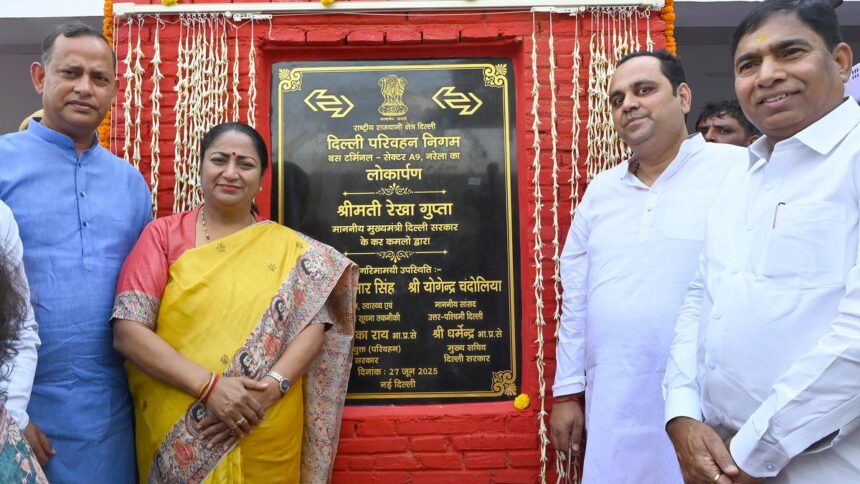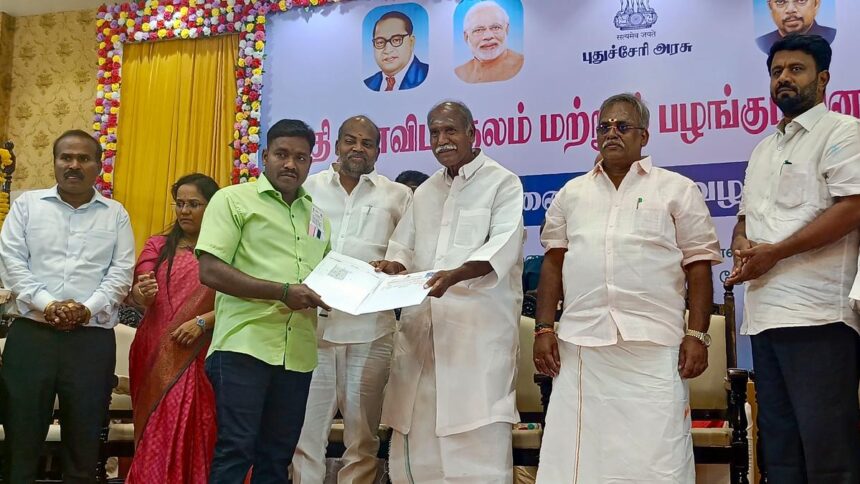At his first-ever bridal couture show, held at Mumbai’s Jio World Convention Centre last night, Gaurav Gupta wanted us to believe in love. And why not? It is the most marketable emotion during India’s festive-to-weddding season, which kicks off in just a few weeks and then barrels through to next summer. The designer even skipped Paris Couture Week this year to focus entirely on this solo outing.
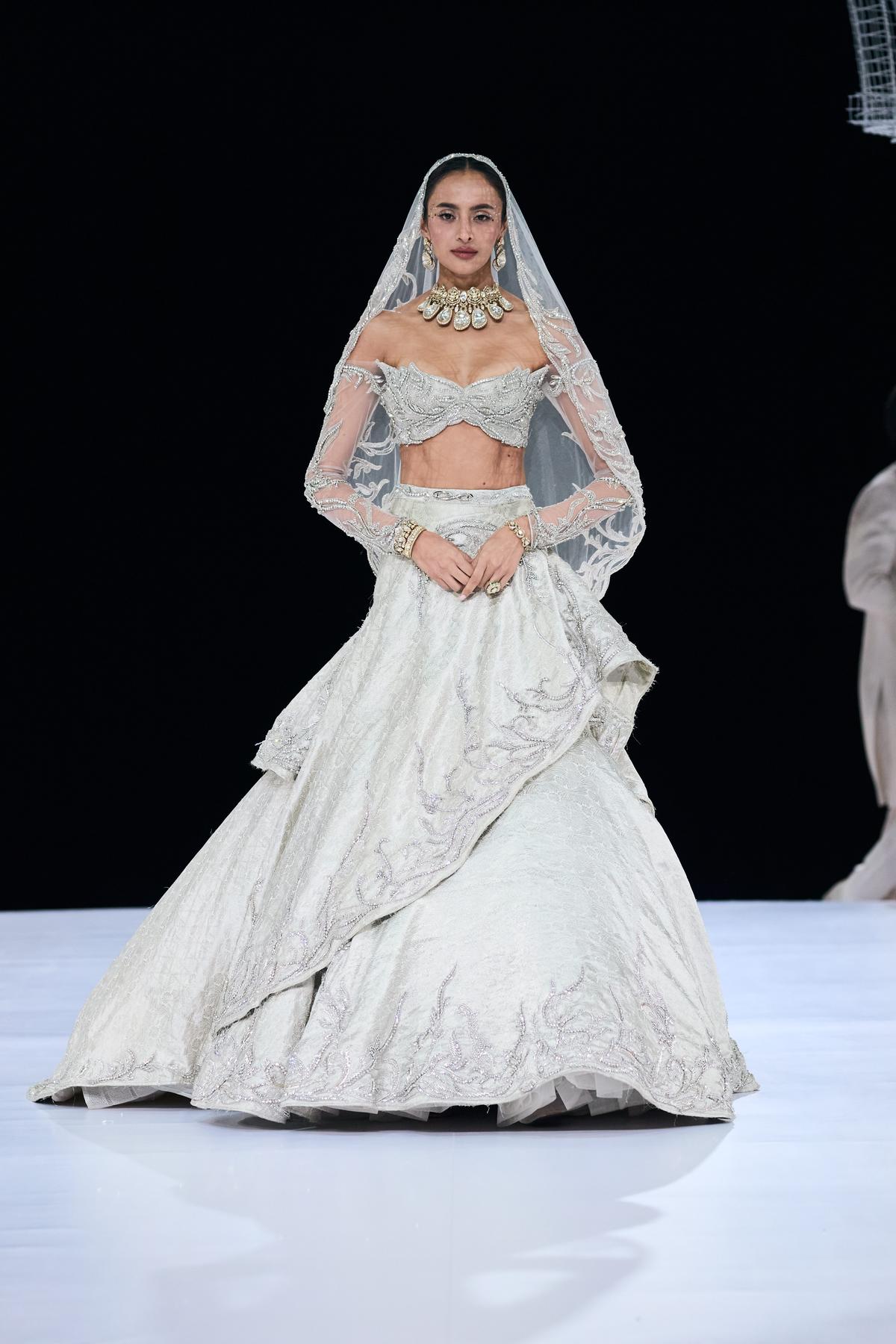
The collection, titled Quantum Entanglement, is an ode to the enduring power of love. “It’s about two souls intertwined across time and space, constantly drawn to each other,” Gaurav said over the phone earlier this week. “We want to celebrate love, woven into the experience of an Indian wedding. This time, in India, we’re doing a large couture collection — with a lot of brocades handwoven in Banaras, metallic tissue inspired by my mother’s wedding sari, layers of surrealism, a bit of Gothic, a bit of Art Nouveau.”

The over 75-piece collection (with 10 looks part of the bridal line) reflected this evolved aesthetic with Gaurav Gupta’s signature: the sari gown he has practically trademarked, sculptural shapes, sherwanis with modern, razor-sharp tailoring, and plenty of zardozi work. There was also a maturity to the palette and structure — less “look at me” flash, more “you can’t look away” finesse.
It is no coincidence that Gaurav chose to go for bridal couture now. The Indian wedding market is booming. According to BlueWeave Consulting, which generates market research reports, India’s wedding planning market was pegged at ₹5.16 trillion in 2024, and is projected to more than double to ₹11.06 trillion by 2031. Market research company Grand View Research, meanwhile, estimates that the broader wedding services market — think venues, catering, jewellery, outfits, entertainment — was already worth about ₹8.64 trillionin 2024, and will hit ₹18.94 trillion by 2030.
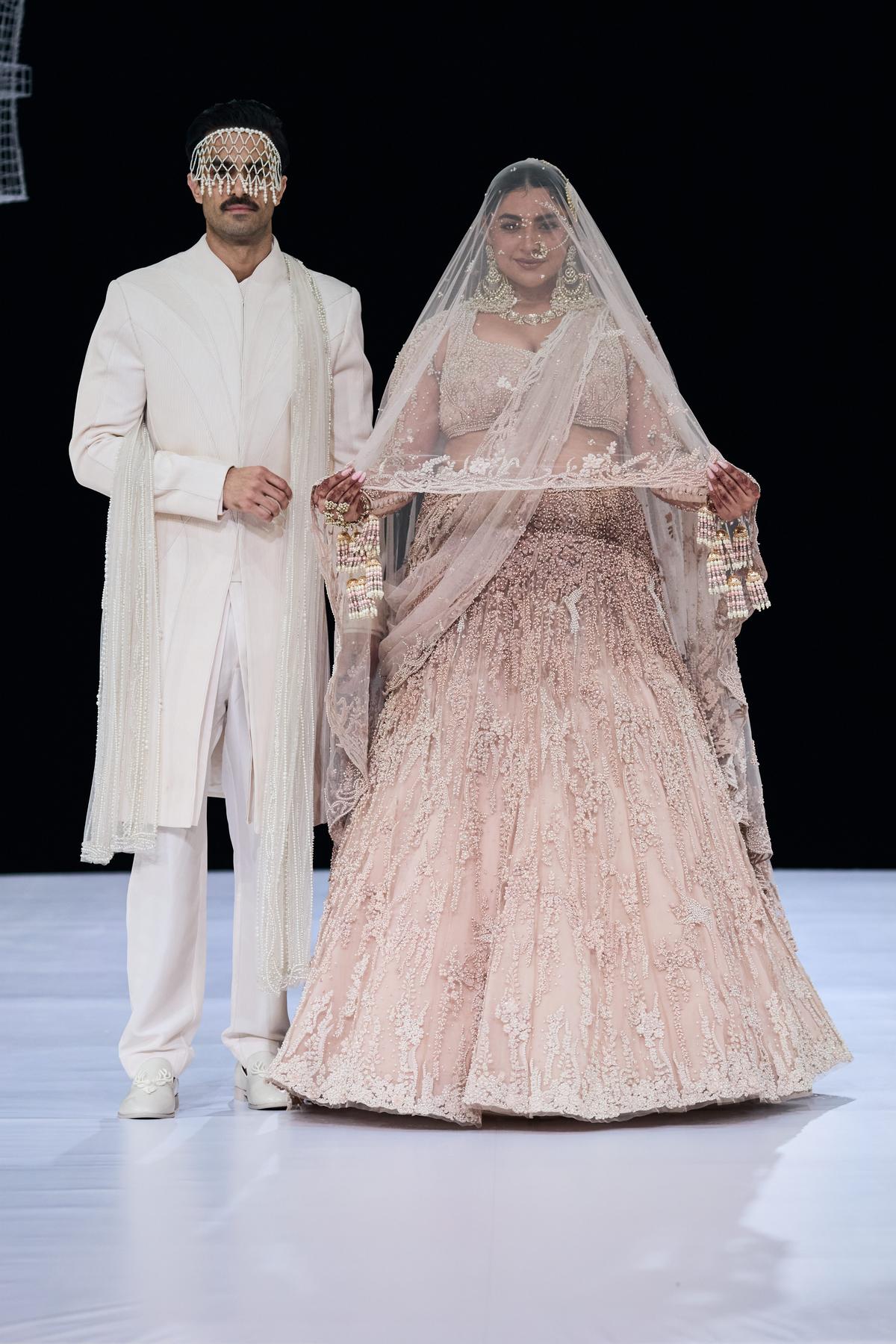
Gaurav has taken a note of this. “Of course, there’s a business lens here,” he admitted. “But I think what excites me most is that Indian bridal wear is becoming more individualistic. Brides are mixing silhouettes, colours, and styles in ways we wouldn’t have seen even five years ago. That’s the space I want to occupy,” he says.
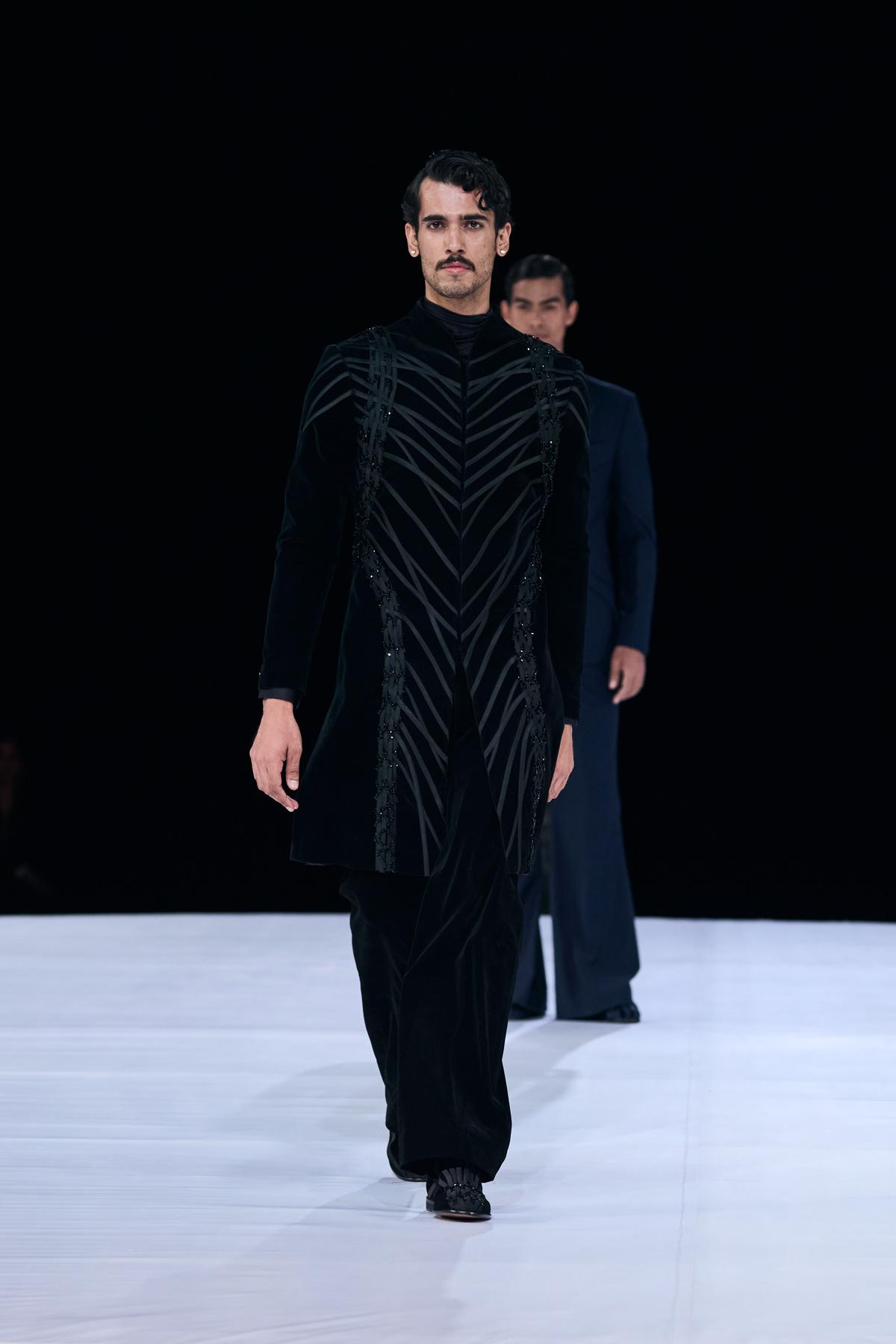
The menswear look
And, spending is not just back to pre-pandemic levels, it has surpassed it. A 2023 report by wedding vendor directory WeddingWire India noted that couples are now spending 20-30% more on bridal wear compared to 2019, with destination weddings and couture outfits driving much of that increase.
Gaurav has acknowledged this shift. “Bridal couture is no longer about tradition alone. It’s about self-expression, individuality, and drama,” he said. “Indian weddings are theatre, and couture is the costume that makes it unforgettable.”
Bringing the drama
On arrival, attendees were ushered through a pre-show space more lavish than most actual sangeet venues: cocktails flowing freely, a grazing table that could have doubled as an art installation, and a roster of live Indian classical music and dance performances. It was, in effect, Gaurav’s way of walking his audience through the pre-function rituals — except, here, the bride was the brand, and every guest was in on the big reveal.
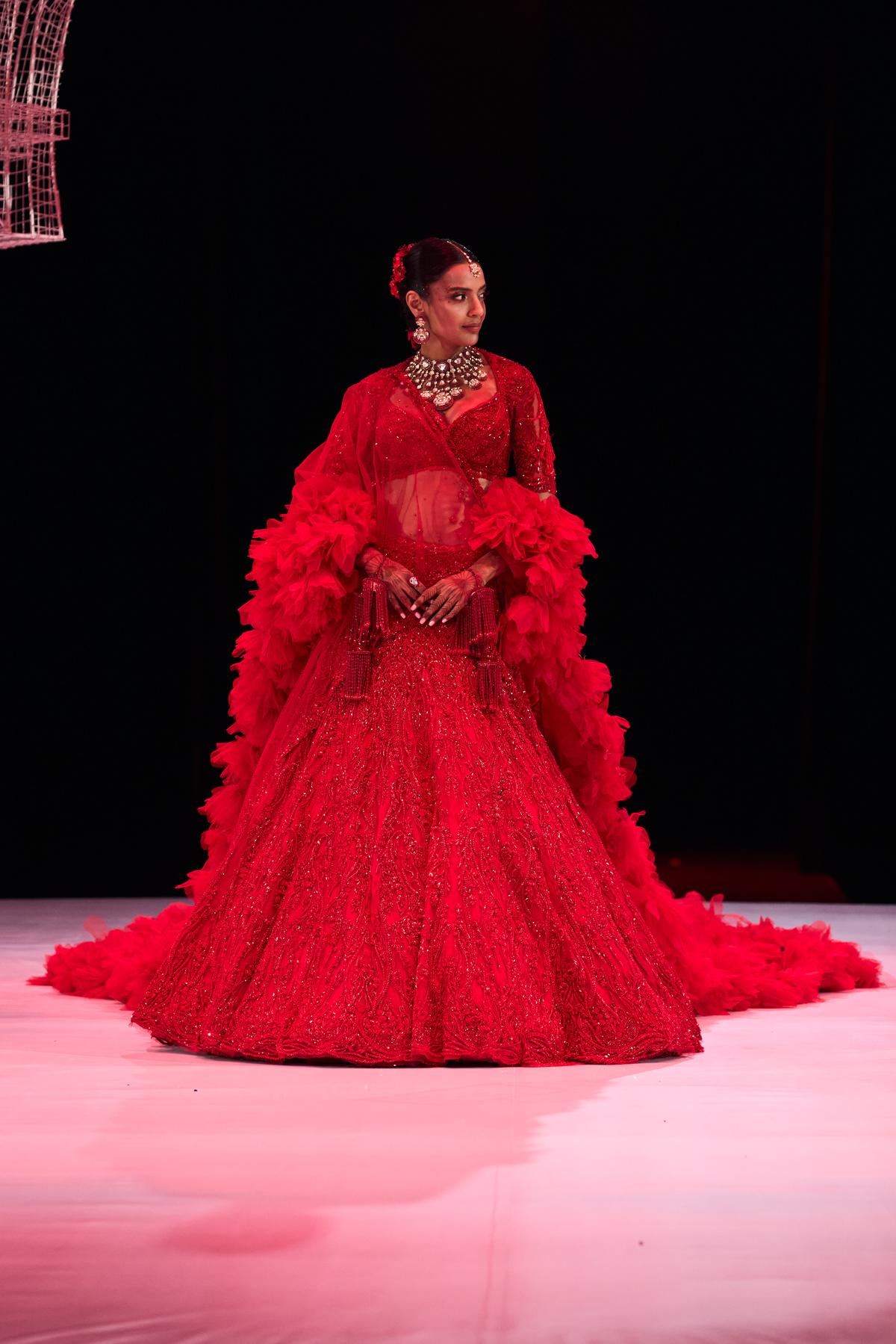
Yes, there were pieces in muted tones, only this time paired with hats and sculptural headpieces. But Gaurav also pushed into a range of shades: oyster grey, champagne silver, even deep midnight blue. Banarasi brocades, some taking 200 days to weave, were layered with crystal webs, hand-cut florals, gilded zari and intricate embroidery. Chantilly lace from France got a futuristic spin with elaborate drapes, while semi-precious stones, mother-of-pearl and temple-style motifs looked part-heirloom, part-sci-fi prop. Laser-cut 3D petals and corsetry with handwoven piping spoke to a clear craft focus — though at times it risked tipping into overworked territory. Menswear strayed from the ceremonial sherwani, with asymmetric closures, pleated drapes and tonal beadwork making it feel looser, if still firmly in couture land.
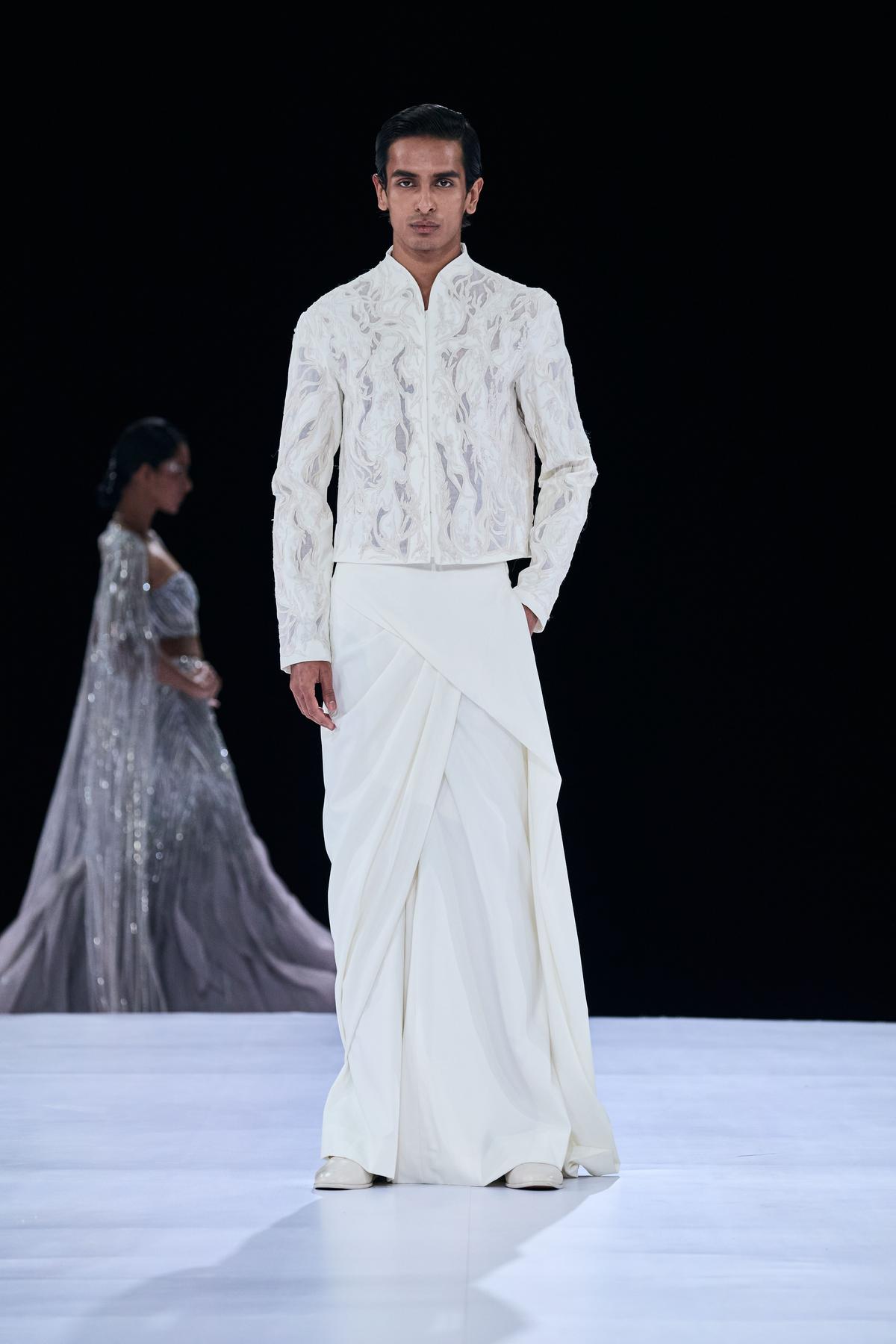
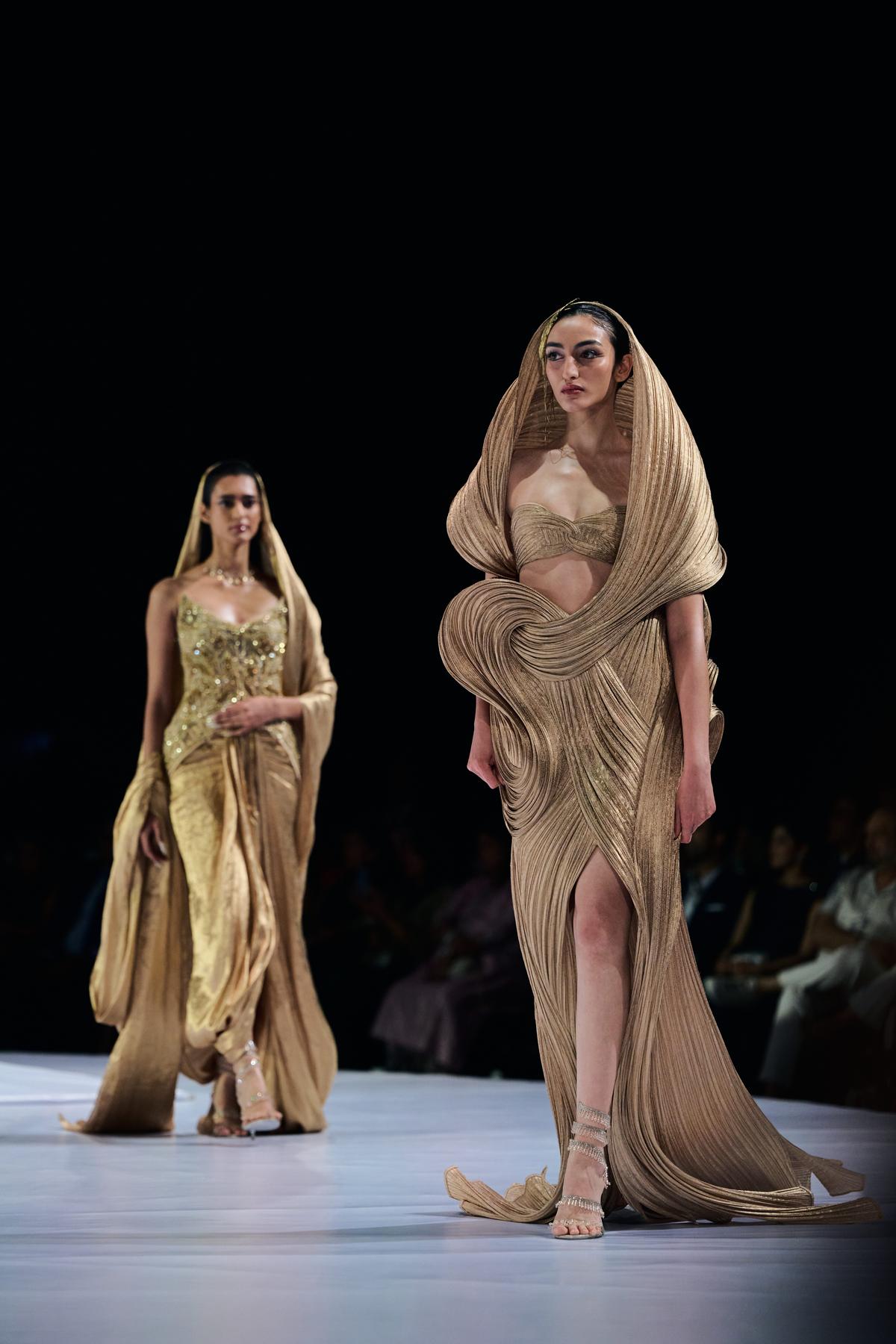
The main runway had, in our opinion, a 3D mandap that felt more architectural than ceremonial, a sculptural structure marrying Gupta’s signature futurism with a certain cultural shorthand. This was not a coy nod to tradition but a direct appropriation, scaled for Instagram’s swipe-happy audience. The sets did most of the heavy lifting in storytelling: the mandap framing each look as if the model were in the throes of her own slow-motion pheras.
The silhouettes were sculpted, structured, often with his signature wave forms and dramatic drapes. The celebrity quotient was predictably high. Janhvi Kapoor took the role of showstopper in an off-white, heavily embroidered creation alongside Sidharth Malhotra, dapper in a sherwani.
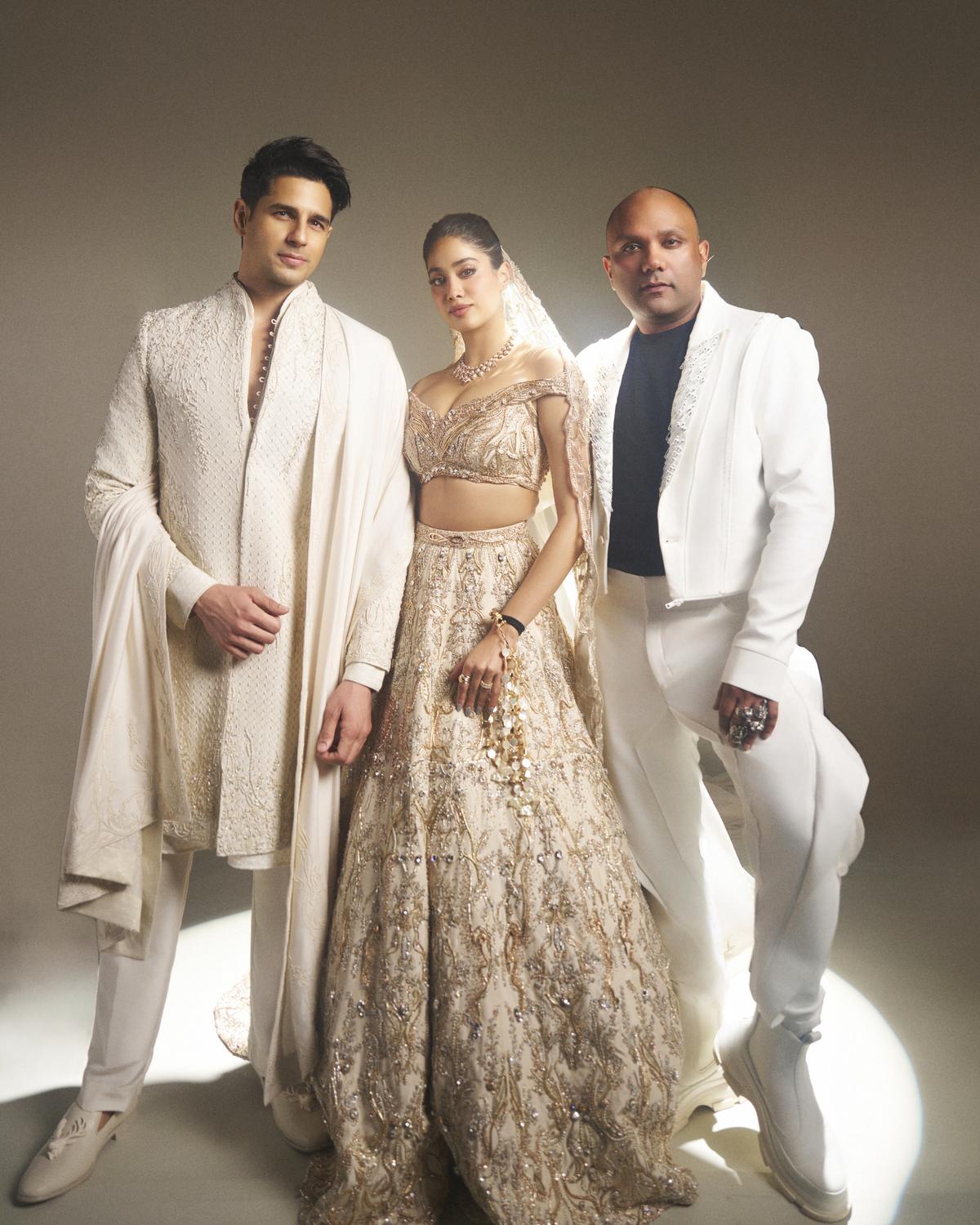
If Gupta’s decision to skip Paris for this was a gamble, the packed house and Instagram stories suggest it paid off. He has, after all, built his brand on sculptural spectacle, and in India’s current wedding economy, spectacle sells. If the show’s mission was to remind the market — both in the room and far beyond — that Gaurav Gupta is as fluent in bridal as he is on the red-carpet, it succeeded. Whether you saw it as a love letter to Indian weddings or a shrewd play for a share of that multi-lakh-crore pie, the outcome was the same: an evening of couture dressed up as nuptials. And with the numbers, as they are, don’t be surprised if your next “wedding invite” is also a front-row seat to a fashion show.
Published – August 09, 2025 05:38 pm IST

















